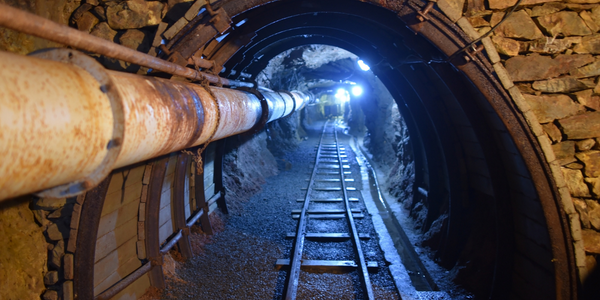Download PDF
MDR Helps Protect the Assets of one of the Nation's Top Coal Suppliers
Technology Category
- Cybersecurity & Privacy - Endpoint Security
- Cybersecurity & Privacy - Network Security
Applicable Industries
- Mining
Applicable Functions
- Business Operation
- Facility Management
Use Cases
- Intrusion Detection Systems
- Cybersecurity
- Remote Asset Management
Services
- System Integration
- Cybersecurity Services
The Challenge
NACCO Industries, Inc., a large publicly-traded holding company with a major coal company subsidiary, faced significant cybersecurity challenges. The company had a small IT team with competing priorities, making it difficult to protect critical company data and secure the executive team from cyber threats. The Director of IT Audit & Cybersecurity, Ed Slusarski, needed a Managed Detection & Response (MDR) solution that could serve as an extension to the remote IT department, provide 24/7 monitoring, and proactively search for threats without interfering with individual workstations.
About The Customer
NACCO Industries, Inc. is a publicly-traded, billion-dollar company that dates back to 1913 when it began as The Cleveland & Western Coal Company. It is the parent company of the North American Coal (NACoal) Corporation, one of the 10 largest coal providers in the US. NACoal operates surface mines that supply coal to power generation and natural resource companies. The company is committed to long-term growth and has a significant volume of proprietary and operational data that needs to be protected. The IT team, led by Ed Slusarski, is small and remote, located at the NACoal headquarters in Dallas, Texas, while Slusarski himself is based in Cleveland, Ohio.
The Solution
Binary Defense's Managed Detection & Response (MDR) platform was chosen to address NACCO's cybersecurity needs. The MDR solution was installed on every user's computer and the NACCO servers within about an hour. The platform provides 24/7 monitoring and real-time analysis of threat behavior, with minimal impact on workstation performance. It continues to monitor workstations even when employees are working remotely. The Binary Defense team acts as an extension of NACCO's IT team, providing proactive monitoring, real-time alerts, and guidance. This allows the small IT team to focus on other important cybersecurity control requirements while ensuring that the company's data and workstations are secure.
Operational Impact
Quantitative Benefit
Related Case Studies.

Case Study
Underground Mining Safety
The goal was to produce a safety system to monitor and support underground mining operations; existing systems were either too simple (i.e. phone line) or overly complex and expensive, inhibiting deployment, and providing little-to-no support in event of an accident. Given the dangerous nature of the mining work environment and the strict regulations placed on the industry, the solution would have to comply with Mine Safety and Health Administration (MSHA) regulations. Yet the product needed to allow for simple deployment to truly be a groundbreaking solution - increasing miner safety and changing daily operations for the better.

Case Study
Mining Firm Quadruples Production, with Internet of Everything
Dundee Precious Metal’s flagship mine, in Chelopech, Bulgaria, produces a gold, copper, and silver concentrate set a goal to increase production by 30%. Dundee wanted to increase production quality and output without increasing headcount and resources, improve miner safety, and minimize cost.

Case Study
Fastenal Builds the Future of Manufacturing with MachineMetrics
Fastenal's objective was to better understand their machine downtime, utilization, quality issues, and to embrace cutting-edge manufacturing technology/process improvement capabilities to bring their team to the next level. However, there was a lack of real-time data, visualization, and actionable insights made this transition impossible.

Case Study
Joy Mining Systems
Joy equipment faces many challenges. The first is machine integration and control. The business end of the machine has a rapidly-spinning cylinder with 6-inch diamond-studded cutting teeth. It chews through rock at rates measured in tens of tons per minute. The system grinds through the rock in front, creating a rectangular mine tunnel. Hydraulic lifters support the ceiling as the machine moves forward. Automated drills and screws drive 3-ft long screws into the ceiling to stabilize it. The rock and coal fall into a set of gathering "fingers" below the cutting cylinder. These fingers scoop up the rock and coal and deposit it onto a conveyor belt. The conveyor passes under the machine and out the back. A train of conveyor belt cars, up to a mile long, follows the cutter into the mine. The rock shoots along this train at over 400 feet per minute until it empties into rail cars at the end. Current systems place an operator cage next to the cutter. Choking dust (potentially explosive), the risk of collapse and the proximity of metal and rock mayhem make the operator cage a hazardous location.

Case Study
Improved Monitoring in Industrial Manufacturing Facility
When your crane is moving tons of magma-hot iron, you can’t afford an unexpected failure. McWane Ductile knew monitoring the crane motor metrics within their facility could help prevent a mechanical failure that would strand an enormous bucket of molten metal overhead. Unfortunately, their legacy wired monitoring system couldn’t work with moving objects in this extreme environment. If they could integrate wireless capabilities into their existing equipment they could extend their monitoring capabilities without starting over from scratch.





